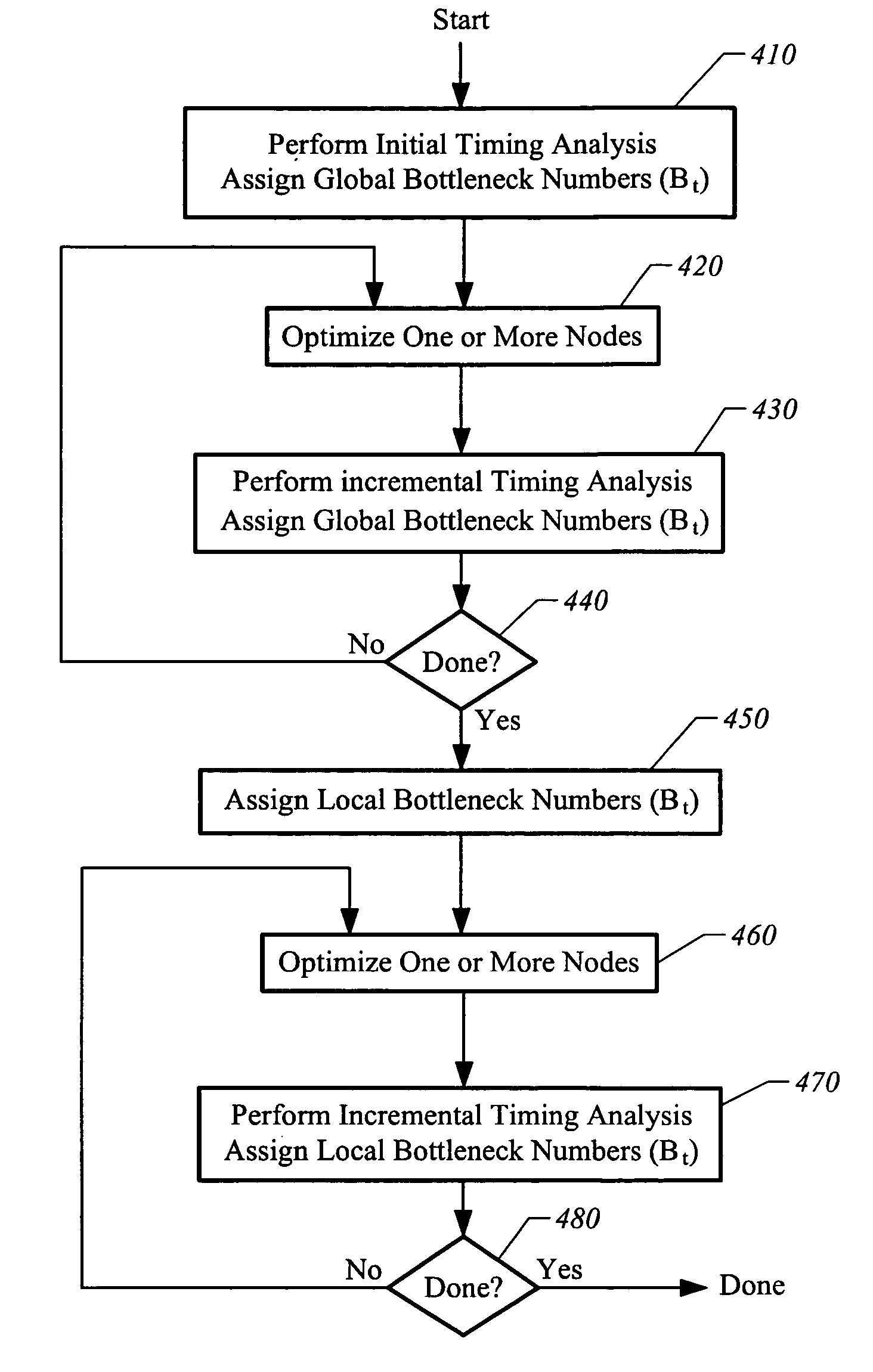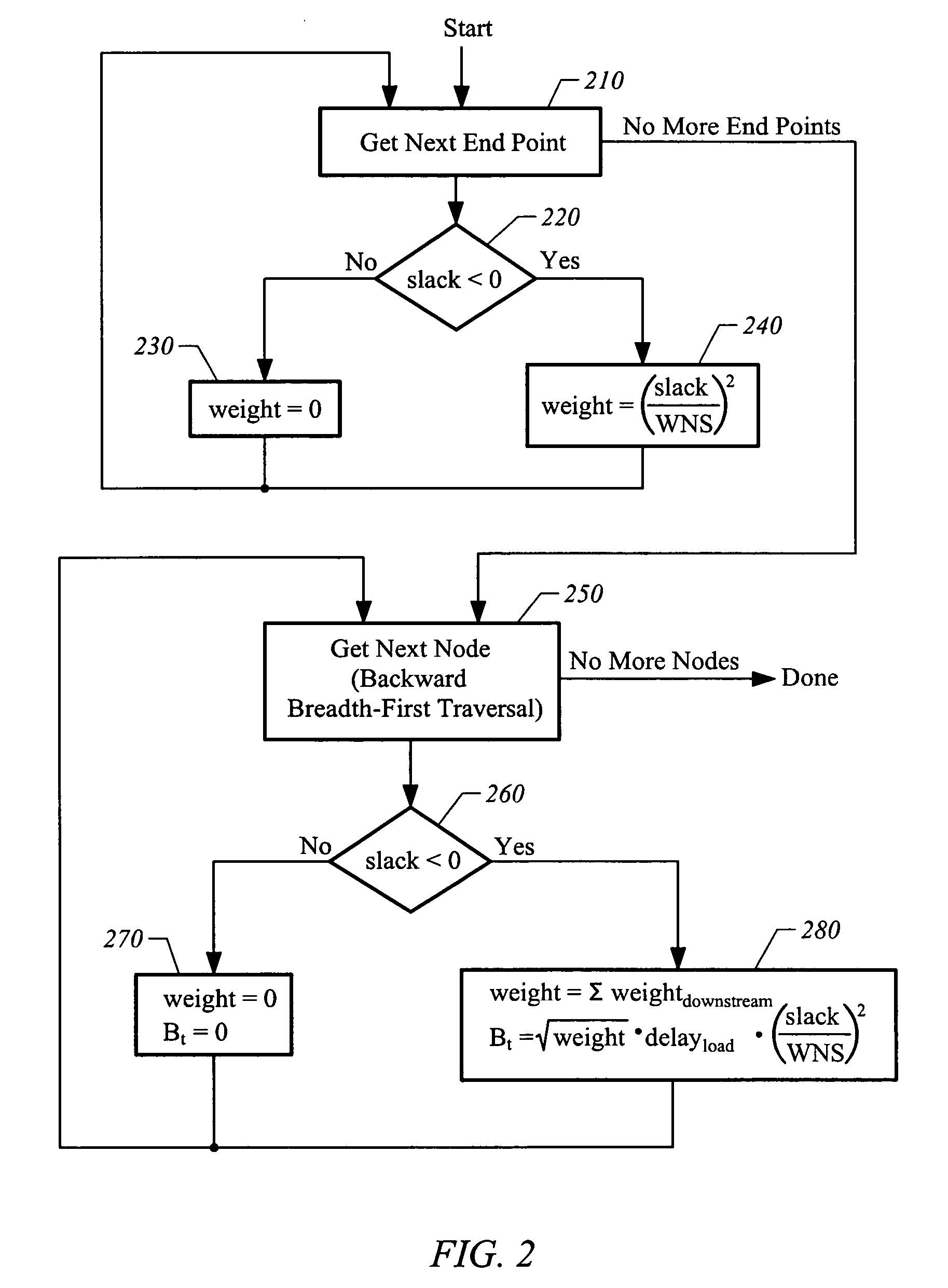Method and apparatus for optimization of digital integrated circuits using detection of bottlenecks
- Summary
- Abstract
- Description
- Claims
- Application Information
AI Technical Summary
Benefits of technology
Problems solved by technology
Method used
Image
Examples
Embodiment Construction
[0021]The present invention dramatically reduces the computational effort to perform physical synthesis on large circuit graphs by using a new technique that identifies “bottleneck” nodes in the circuit graph and optimizes these bottleneck nodes. This approach performs a global analysis of the design for performance bottlenecks and dramatically reduces the execution time of physical synthesis in that no path enumeration is required. The approach is computationally very efficient and also robust in the presence of bad constraints.
[0022]The goal of physical synthesis optimization engines is to optimize multiple objectives—timing, slew, capacitance, leakage, etc. The goal of any optimizer is to improve the paths between some predefined start points and end points. Any path in the circuit graph has a constraint for the time that is allocated for a signal to reach the end point from a start point. The goal of the optimization phase is to reduce the time required for the signal to travel ...
PUM
 Login to View More
Login to View More Abstract
Description
Claims
Application Information
 Login to View More
Login to View More - R&D
- Intellectual Property
- Life Sciences
- Materials
- Tech Scout
- Unparalleled Data Quality
- Higher Quality Content
- 60% Fewer Hallucinations
Browse by: Latest US Patents, China's latest patents, Technical Efficacy Thesaurus, Application Domain, Technology Topic, Popular Technical Reports.
© 2025 PatSnap. All rights reserved.Legal|Privacy policy|Modern Slavery Act Transparency Statement|Sitemap|About US| Contact US: help@patsnap.com



